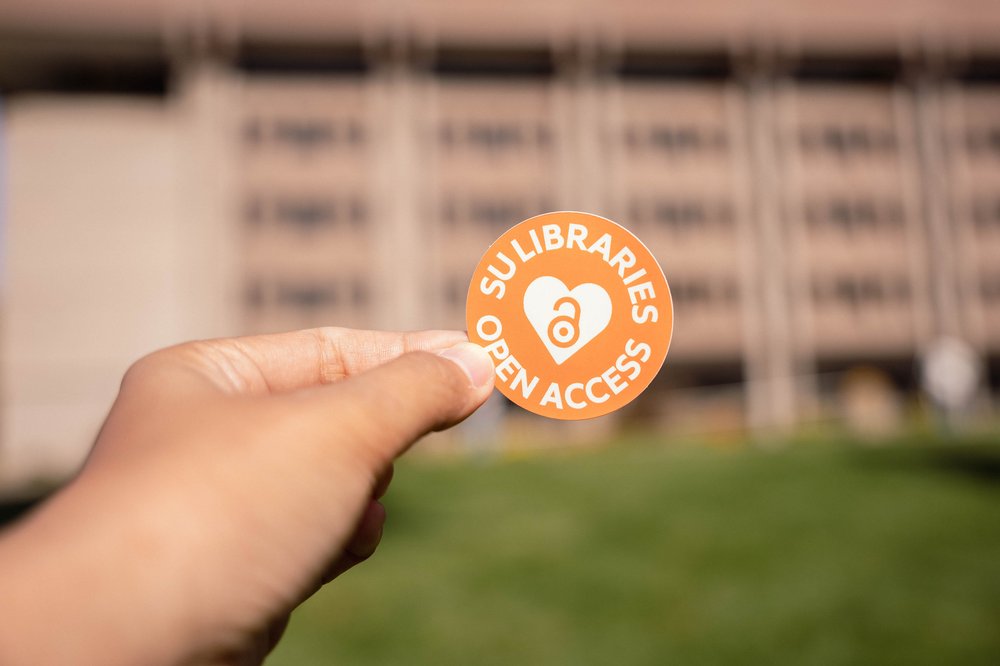SURFACE at 10 Million: A Celebration and Reflection on What Open Scholarship Means in the Age of AI

by Dylan Mohr, Open Scholarship Librarian
SURFACE, Syracuse University’s institutional repository, just hit a milestone: our 10 millionth download. Launched in 2010, the repository now holds more than 20,000 items. Work such as faculty publications have crossed oceans, dissertations have launched young careers, and student work has reached readers far beyond campus in ways that many undergraduates never thought possible. During this Open Access Week, we’re celebrating that number and reflecting on what it means 15 years after the launch of SURFACE.
Ten million is an astonishing number, and it’s worth pausing to contemplate the impact. It means that ten million times, someone, somewhere in the world, needed research produced at Syracuse, and SURFACE was there, facilitating the travel of ideas to where they were needed most. Most importantly, no one who clicked on a piece of scholarship had to travel to a library miles away, hold a university ID, or pay to read what they found. That is what SURFACE was designed to do. Ten million downloads tells us it’s doing its job.
But as we celebrate, we also recognize that openness means something different today than it did in 2010. A growing percentage of downloads now come from non-human readers, automated systems that access scholarship and sometimes incorporate it into AI and large language model training datasets. This new reality challenges us to think about what open scholarship means and how it creates value in a scholarly ecosystem that now includes both human and machine readers. Scholarship that was once read, cited and built upon by individuals is now also parsed by algorithms that extract data and patterns. While the vast majority of SURFACE downloads still represent “traditional” scholarly engagement, we know that AI companies have relied on broad interpretations of fair use to scrape publicly available materials for training purposes. The tension between sharing knowledge freely and safeguarding its ethical use is one of the defining questions for open access today. What allows a graduate student across the globe to access Syracuse research also enters that scholarship into a much wider and increasingly complex information environment.
That complexity is not a failure of openness but should rather be a call to clarity. Since 2010, SURFACE has existed to disseminate scholarship. Download counts are one way to measure reach, but they were never the whole story. The real story is in what happens after the click—when knowledge is shared, built upon, cited, questioned and transformed.
So, this Open Access Week, let’s not only celebrate ten million downloads but also recommit to the principles that made those downloads possible. Open Access at SU is a commitment to share the incredible good that emerges from our scholarship with the world. It rests on the belief that ideas should circulate freely, that publicly funded research should serve the public, and that progress depends on scholars sharing and building on one another’s work.
Every time Syracuse scholarship sparks new thought, discovery or dialogue—whether it happens one time or ten million times—it reaffirms the purpose of SURFACE. The age of AI brings new complexities to that work, but also new opportunities to reimagine how open scholarship can continue to serve that role despite the complexity that new technologies introduce.
Learn more about open access at Syracuse University:
- SURFACE Institutional Repository
- SUL Read and Publish Agreements (which covers OA fees with select publishers)
- SURFACE Journals
- Consultations with Open Scholarship Librarian Dylan Mohr (dpmohr@syr.edu) on author rights, APC charges, publishing in SURFACE, and other open access concerns
